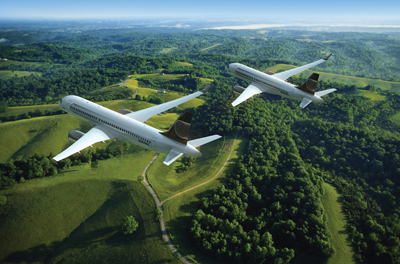
Features
Operations
Alternate Approach: Betting on the CSeries
How to measure a bust? Failed expectations are a good starting point. But who sets expectations? Major air shows like Le Bourget near Paris and Farnborough this year are good barometers to gauge the health of the industry.
September 27, 2010 By David Carr
How to measure a bust? Failed expectations are a good starting point. But who sets expectations? Major air shows like Le Bourget near Paris and Farnborough this year are good barometers to gauge the health of the industry. With $28 billion in orders, Farnborough quadrupled the output of Le Bourget last year, but remained eclipsed by the record $88 billion in deals announced in 2008 – suggesting the rebound in commercial and business aviation is taking hold even while the military side remains flat.
 |
Still, the timing of orders remains an illusion, supported by the manufacturers’ PR departments, aided and abetted by customers, and fuelled by the trade media hungry for headlines. Airline executives do not arrive at air shows clutching their cheque books and multi-billion dollar aircraft deals are not negotiated over night. Manufacturers stockpile orders to announce during the opening days of the show in a testosterone-charged horse race, despite assurances by Airbus Industries’ CEO Tom Andres to the contrary.
Even so, despite having “bagged” over $1 billion in orders for business jets and Q400 turboprops leading up to and during Farnborough, Bombardier Aerospace had a less than spectacular air show. The news that Doha-based Qatar Airways would buy two Global Express XRS jets made headlines for what the announcement did not include; an order for up to 30 CSeries airplanes, the 110- to 149 seat self-described “game changer” which at times appears to have struggled getting on the board.
Qatar Airways is one of three Gulf-based “super-connectors” with ambitions to turn the region into a transfer powerhouse. The airline has 82 aircraft and 180 on order, largely for the long haul, indicating that an order for mid-size “feeder” aircraft is imminent. Qatar Airways has had an on-and-off dalliance with the CSeries for approximately two years.
The stumbling block appears to be over cost guarantees by engine supplier Pratt & Whitney, which is claiming that its new technology PW1000G geared turbofan that power the CSeries will reduce maintenance costs by 20 per cent over its closest competitor, a figure some in the industry question.
There is also speculation that with a sticker price of between $55 million and $63 million per aircraft, some airlines believe the CSeries is over-priced, although Bombardier insists that cost has not been a dominant issue in negotiations.
Just as likely, the order drought comes down to old fashioned horse trading and an industry wait and see over the full range of players entering the 100- to 149 seat segment. Bombardier pioneered the regional jet market and sees delivery demand for up to 6,700 aircraft, predicting that half will be CSeries.
An ambitious claim given that this time around, Bombardier and Brazil’s Empresa Brasileira de Aeronautica (Embraer) will no longer have the field to themselves. Although Bombardier, Japan’s Mitsubishi and Russia’s Sukhoi are the three manufacturers out of the gate with a “clean sheet” design, Airbus, Boeing and Embraer are considering re-engined versions of existing aircraft. Both Airbus and Embraer are expected to make decisions on whether to re-engine their A320 and E-Jet product line later this year. Embraer is reported to be considering adding a new design to its E-190 and E-175 aircraft to go head-to-head with the CSeries. Airbus is said to be in talks with Qatar Airways, which is a launch customer for the A350, over a re-engined A320, although Qatar’s involvement in these discussions might be to keep Bombardier on its toes.
Clearly Bombardier has made the world’s two largest airframe manufacturers and its Brazilian rival sit up and take notice, a fact not reflected in the order tally at Farnborough. Still, while Embraer pocketed orders for 35 E-175 and 15 E-190 aircraft, the market the CSeries is set to compete in went largely untouched except for an order for 30 Russian SSJ-100s from Indonesia’s Kartika Airlines. Indeed, with orders for 90 aircraft, Bombardier claims the CSeries has already captured half the net orders for the market segment.
Nevertheless the pressure is on Bombardier to give the program some lift between now and mid-2011 when the horse race rolls into Paris and Airbus and Boeing have joined the track.
David Carr is a Wings writer and columnist.